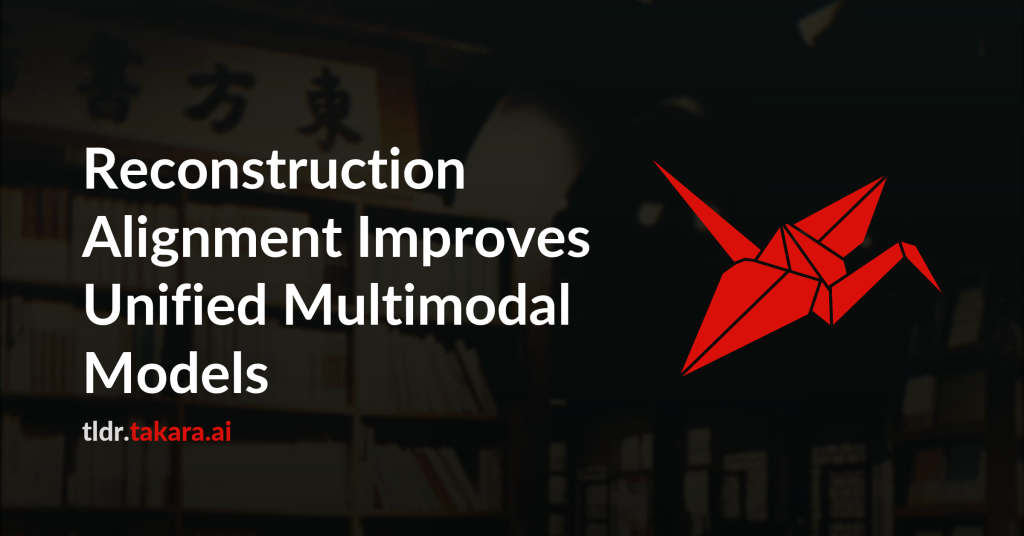Unified multimodal models (UMMs) unify visual understanding and generation
within a single architecture. However, conventional training relies on
image-text pairs (or sequences) whose captions are typically sparse and miss
fine-grained visual details–even when they use hundreds of words to describe a
simple image. We introduce Reconstruction Alignment (RecA), a
resource-efficient post-training method that leverages visual understanding
encoder embeddings as dense “text prompts,” providing rich supervision without
captions. Concretely, RecA conditions a UMM on its own visual understanding
embeddings and optimizes it to reconstruct the input image with a
self-supervised reconstruction loss, thereby realigning understanding and
generation. Despite its simplicity, RecA is broadly applicable: across
autoregressive, masked-autoregressive, and diffusion-based UMMs, it
consistently improves generation and editing fidelity. With only 27 GPU-hours,
post-training with RecA substantially improves image generation performance on
GenEval (0.73$\rightarrow$0.90) and DPGBench (80.93$\rightarrow$88.15), while
also boosting editing benchmarks (ImgEdit 3.38$\rightarrow$3.75, GEdit
6.94$\rightarrow$7.25). Notably, RecA surpasses much larger open-source models
and applies broadly across diverse UMM architectures, establishing it as an
efficient and general post-training alignment strategy for UMMs

